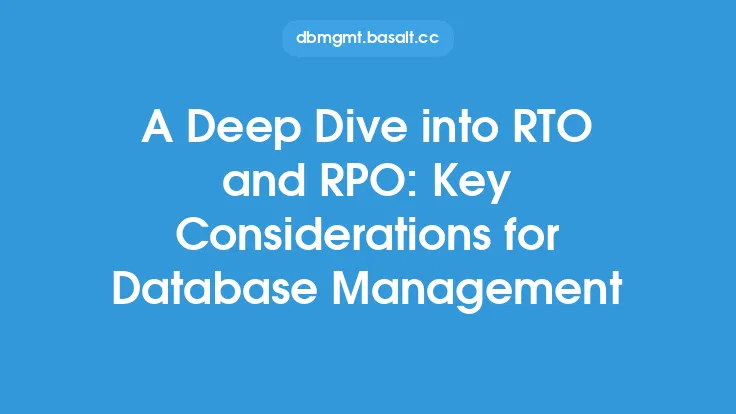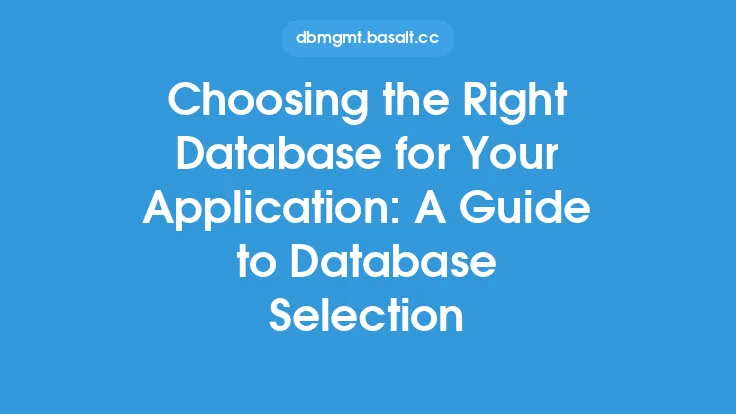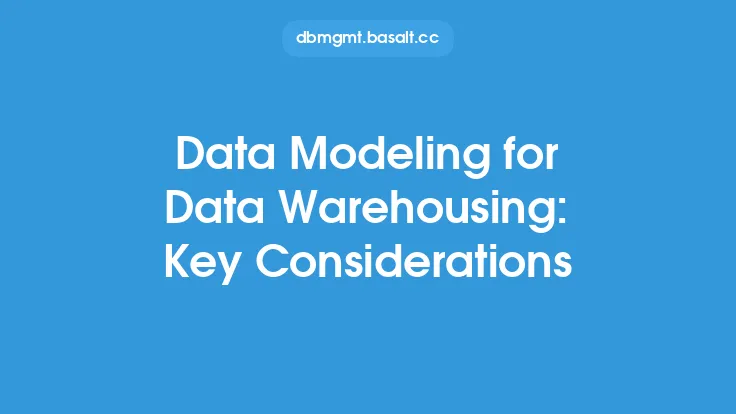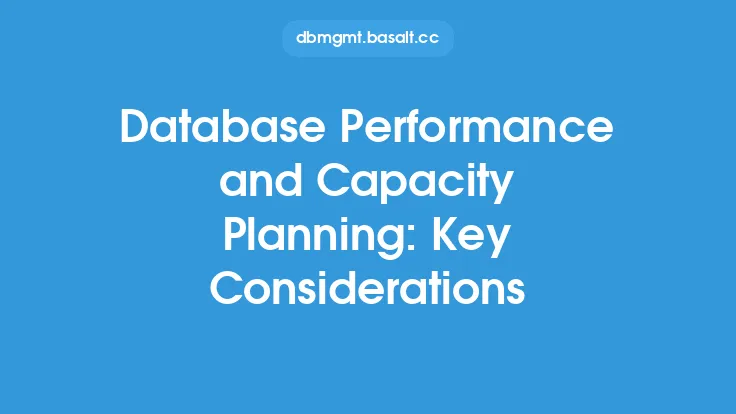When it comes to handling big data and analytics, selecting the right database is crucial for efficient data management and analysis. With the exponential growth of data, organizations are faced with the challenge of choosing a database that can handle large volumes of data, provide high performance, and support advanced analytics. In this article, we will delve into the key considerations for database selection for big data and analytics, exploring the various options available and the factors that influence the decision-making process.
Introduction to Big Data and Analytics
Big data refers to the vast amounts of structured and unstructured data that organizations generate and collect from various sources, including social media, sensors, and applications. Analytics, on the other hand, is the process of examining data to gain insights and make informed decisions. The combination of big data and analytics has given rise to new technologies, tools, and techniques that enable organizations to extract value from their data. However, the sheer volume, velocity, and variety of big data require specialized databases that can handle these characteristics.
Types of Databases for Big Data and Analytics
There are several types of databases that are suitable for big data and analytics, each with its strengths and weaknesses. Some of the most popular options include:
- Relational databases: These databases use a fixed schema and are ideal for structured data. They are widely used for transactional systems but can be limiting for big data and analytics.
- NoSQL databases: These databases are designed for unstructured or semi-structured data and offer flexible schema options. They are ideal for big data and analytics but can be challenging to manage.
- NewSQL databases: These databases combine the benefits of relational and NoSQL databases, offering high performance and scalability.
- Graph databases: These databases are designed for complex relationships and are ideal for social media, recommendation engines, and other applications that require graph-based analysis.
- Time-series databases: These databases are optimized for storing and analyzing time-stamped data, making them ideal for IoT, sensor data, and other applications that require real-time analysis.
Key Considerations for Database Selection
When selecting a database for big data and analytics, there are several key considerations that organizations must take into account. These include:
- Data volume and velocity: The database must be able to handle large volumes of data and high ingestion rates.
- Data variety: The database must be able to handle structured, unstructured, and semi-structured data.
- Performance: The database must provide high performance and low latency for real-time analytics.
- Scalability: The database must be able to scale horizontally and vertically to handle growing data volumes.
- Security: The database must provide robust security features to protect sensitive data.
- Integration: The database must be able to integrate with other tools and systems, including data ingestion tools, analytics platforms, and data visualization tools.
Data Storage and Management
Data storage and management are critical components of a big data and analytics database. Organizations must consider the following factors:
- Data compression: The database must be able to compress data to reduce storage costs and improve performance.
- Data partitioning: The database must be able to partition data to improve query performance and reduce storage costs.
- Data replication: The database must be able to replicate data to ensure high availability and disaster recovery.
- Data governance: The database must provide robust data governance features to ensure data quality, integrity, and security.
Querying and Analytics
Querying and analytics are critical components of a big data and analytics database. Organizations must consider the following factors:
- Query language: The database must support a query language that is easy to use and provides high performance.
- Query optimization: The database must be able to optimize queries to improve performance and reduce latency.
- Analytics capabilities: The database must provide built-in analytics capabilities, including aggregation, filtering, and grouping.
- Integration with analytics tools: The database must be able to integrate with popular analytics tools, including Apache Spark, Apache Hadoop, and data visualization tools.
Cloud and On-Premises Deployment
Organizations must also consider the deployment options for their big data and analytics database. Cloud deployment offers scalability, flexibility, and cost savings, while on-premises deployment provides control, security, and customization. Hybrid deployment models that combine cloud and on-premises infrastructure are also gaining popularity.
Conclusion
Selecting the right database for big data and analytics is a critical decision that requires careful consideration of several factors, including data volume and velocity, data variety, performance, scalability, security, and integration. By understanding the different types of databases available and the key considerations for database selection, organizations can make informed decisions and choose a database that meets their needs and provides a robust foundation for big data and analytics. Whether you choose a relational, NoSQL, NewSQL, graph, or time-series database, the key is to select a database that can handle the complexities of big data and analytics and provide high performance, scalability, and security.





